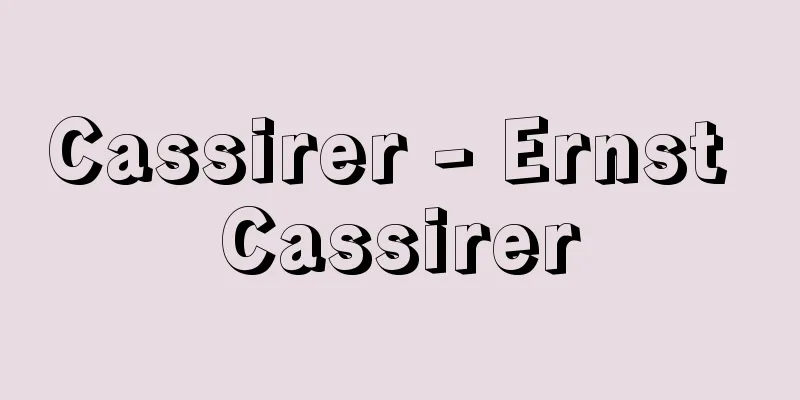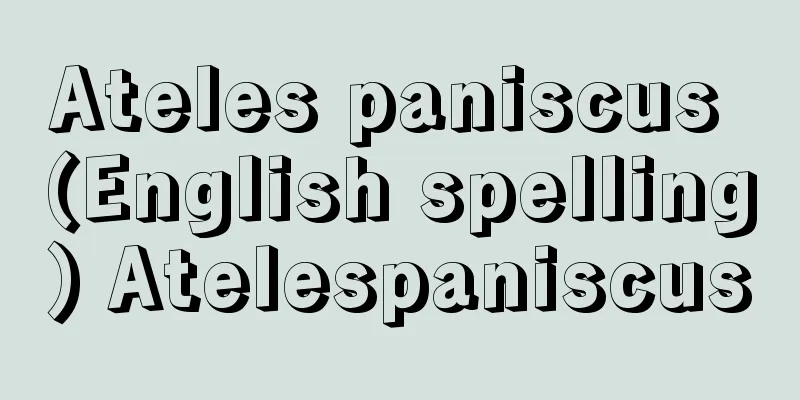Cassirer - Ernst Cassirer

|
German philosopher and intellectual historian. Born in Breslau in Silesia (now Wrocław, Poland) as the son of a wealthy Jewish merchant. From his childhood, he had an extraordinary memory, strong intellect, and rich artistic sensibility. He studied philosophy, law, history, literature, mathematics, and biology at universities in Berlin, Leipzig, and Heidelberg, and by the time he obtained his doctorate from Professor H. Cohen at the University of Marburg, he had become so knowledgeable that even his teacher was amazed. He was a sincere and gentle scholar, but his Jewish broad perspective and liberal upbringing allowed him to tackle basic philosophical problems head-on and produce a series of major works that became the source of 20th century thought, taking on the historical experience of the two world wars. Under Cohen, Cassirer followed the path of Kant's criticism of cognition, and especially his empirical and historical methods were crucial. At the time of the outbreak of the First World War, he was working as a private lecturer at the University of Berlin and was in the process of writing the third volume of his magnum opus, Problems of cognition in modern philosophy and science (From Kant to Friess). However, Cassirer, who was also a historian of the mind, decided to question the meaning of the culture of the German people in Freedom and Form (1916), and in its sequel, Idea and Form (1921), he showed his sympathy and devotion to Goethe. This development from Kant to Goethe was also the theme of his major work, Philosophy of the Symbolic Form (1922-1929), which was "From the Criticism of cognition to Cultural Criticism." The philosophy of the symbolic form is based on the idea that cultural fields such as myth, language, history, religion, science, and art are functionally unified by the ability (symbolic function) that only the human mind possesses. The symbol function is characterized by a duality of sensory, material impulses and the impulse of spiritual meaning, and the world of images (symbolic form) which it produces is nothing other than human beings' unique understanding and meaning of the world. After fleeing Nazi Germany to the United States, he succeeded Wilbur Marshall Urban (1873-1952) at Yale University, and his works, including Man (1944), became widely read in the English-speaking world. His symbol theory formed the core of semiotic aesthetician Langer's philosophy of symbols, and the Warburg Institute where he worked produced art historians such as Panofsky and Ernst H. J. Gombrich (1909-2001), and continues to have a direct and indirect influence on contemporary cultural anthropology, history of science, philosophy of science, hermeneutics, ethology, poetics, psychoanalysis, and other fields. [Akiko Tsukamoto February 17, 2015] "Man, translated by Miyagi Otoya (1953, Iwanami Shoten/Iwanami Bunko)" ▽ "Philosophy of Symbolic Forms I: Language, translated by Ikumatsu Keizo et al. (1972, Takeuchi Shoten)" ▽ "Philosophy of the Enlightenment, translated by Nakano Yoshiyuki (1962, Kinokuniya Shoten/Chikuma Gakugei Bunko)" ▽ "Weimar Culture, written by Peter Gay, translated by Itozu Jūsan (1970, Misuzu Shobo)" [References] | |Source: Shogakukan Encyclopedia Nipponica About Encyclopedia Nipponica Information | Legend |
|
ドイツの哲学者、精神史家。裕福なユダヤ人商人の息子として、シュレージエン地方のブレスラウ(現、ポーランドのブロツワフ)に生まれる。少年時代から並はずれた記憶力と強靭(きょうじん)な思考力、そして豊かな芸術的感性を備えていた。ベルリン、ライプツィヒ、ハイデルベルクの諸大学で哲学をはじめ法律、歴史、文学、数学、生物学を修め、マールブルク大学のH・コーヘン教授のもとで学位を取得したころには師も驚くほどの博識の持ち主になっていた。真摯(しんし)・温厚な学者であったが、ユダヤ人独特の視野の広さと自由主義的な環境も相まって、哲学上の基本的問題にまっこうから取り組むとともに、二つの大戦という歴史的経験を受け止めて、20世紀の思想の源流となる大著を次々と生み出した。 彼は、コーヘンのもとで、カントの示した認識批判の道をカントの方法に倣って歩んでいたが、とくに、経験的・歴史的考察という方法が決定的であった。第一次世界大戦勃発(ぼっぱつ)時にはベルリン大学の私講師を務めつつ、大著『近代の哲学と科学における認識問題』の第3巻(カントからフリースへ)を執筆中であった。しかし精神史家でもあるカッシーラーはこのとき『自由と形式』(1916)によってドイツ民族の文化の意義を問う決意をし、その続編となる『理念と形姿』(1921)においては、ゲーテへの共感と傾倒を示している。このカントからゲーテへの展開はまた、「認識批判から文化批判へ」という、主著『象徴形式の哲学』(1922~1929)のテーマでもあった。象徴形式の哲学は、人間精神のみがもつ能力(シンボル機能)によって、神話、言語、歴史、宗教、科学、芸術といった文化諸領域が機能的に統一される、という発想に基づいている。シンボル機能は感性的、素材的契機と、その精神的意味の契機の二重性をその特性とし、これが生み出す像世界(象徴形式)は人間独自の世界把握と意味づけにほかならない。 ナチス政権下のドイツを逃れてアメリカに亡命した彼は、エール大学でアーバンWilbur Marshall Urban(1873―1952)の後を継ぎ、以降英語圏で『人間』(1944)をはじめ彼の著作は広く読まれるようになった。彼のシンボル理論は記号美学者ランガーのシンボルの哲学の核をなし、また彼のいたワールブルク研究所からはパノフスキーやゴンブリッヒErnst・H・J・Gombrich(1909―2001)らの美術史家が出、さらに現代の文化人類学、科学史、科学哲学、解釈学、動物行動学、詩学、精神分析学その他の分野に直接間接の影響を及ぼし続けている。 [塚本明子 2015年2月17日] 『宮城音弥訳『人間』(1953・岩波書店/岩波文庫)』▽『生松敬三他訳『象徴形式の哲学Ⅰ 言語』(1972・竹内書店)』▽『中野好之訳『啓蒙主義の哲学』(1962・紀伊國屋書店/ちくま学芸文庫)』▽『ピーター・ゲイ著、到津十三男訳『ワイマール文化』(1970・みすず書房)』 [参照項目] | |出典 小学館 日本大百科全書(ニッポニカ)日本大百科全書(ニッポニカ)について 情報 | 凡例 |
<<: Living Picture - Katsujinga
Recommend
A view of investigation based on questioning -
...There is some debate about how current law str...
The Chinese Globe Magazine
…A magazine published in Chinese by American miss...
Tapeworm - Tapeworm
A gigantic, nemertetan worm of the family Baseodis...
Cooperative distributed system - autonomous distributed system
[Development of cooperative distributed systems] ...
Shchedrin, RK (English spelling)
...The Russian tradition of high technical sophis...
Iwakura Insane Asylum
...In the course of time, private lodgings for th...
Taebaek Mountains
A mountain range that runs north to south along t...
Agrostis stolonifera (English name) Agrostis stolonifera
…[Kitamura Fumio]. … *Some of the terminology tha...
Tosa Bay
The area is located on the southern coast of Koch...
Umikongo (Japan) - Umikongo
...The cruise ship that connects to Kushimoto, 2k...
rajas
…The material principle is composed of three elem...
Dana
…Celtic goddess. Mother of the Earth, mother of l...
Gwangryang Bay
A bay on the north bank of the Taedong River in t...
Kawabe Charcoal Firewood Wholesaler - Kawabe Tan Shindonya
…The increase in demand in the cities gave rise t...
Nathan the Wise
A five-act dramatic poem written by German Enligh...









